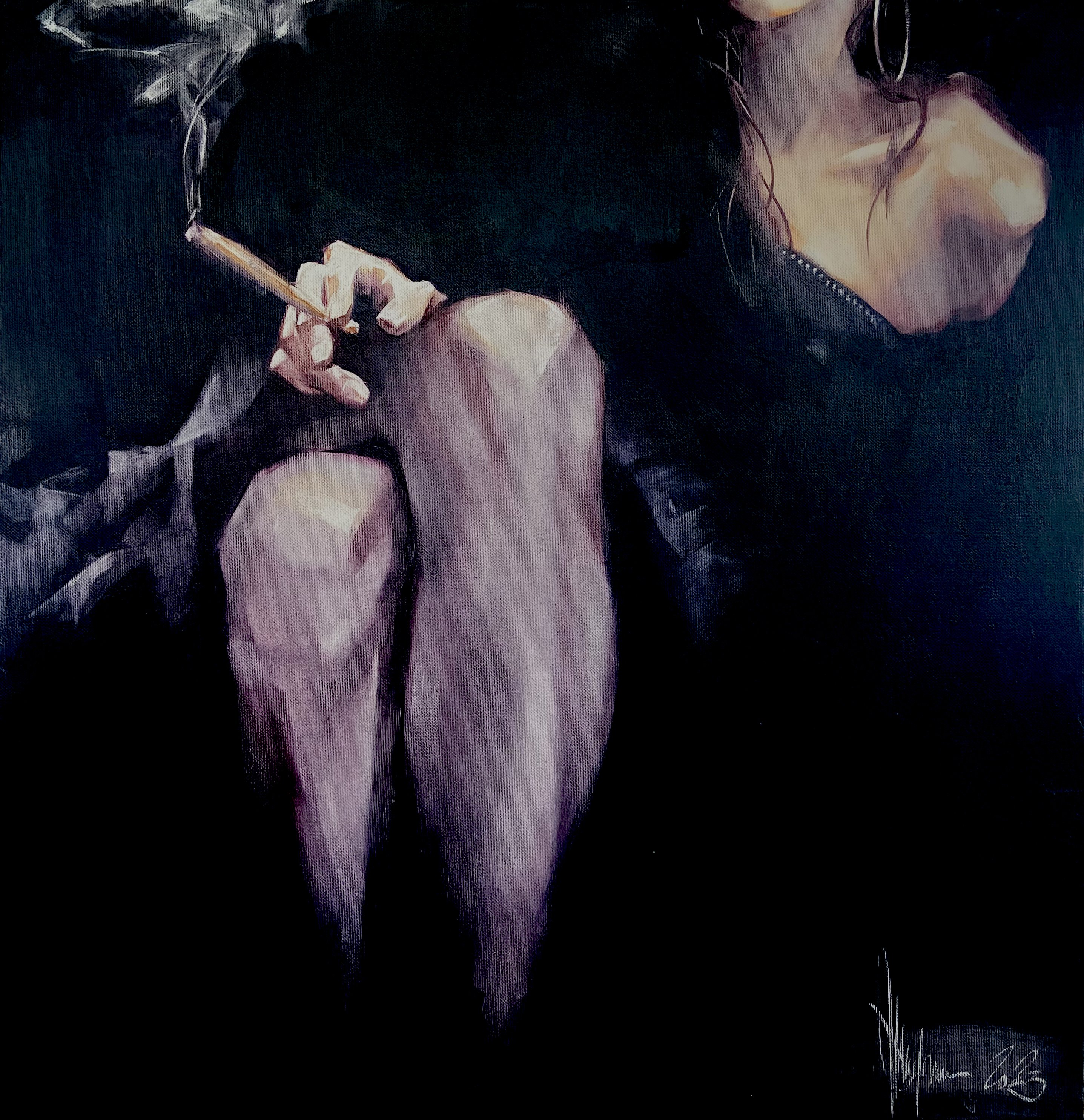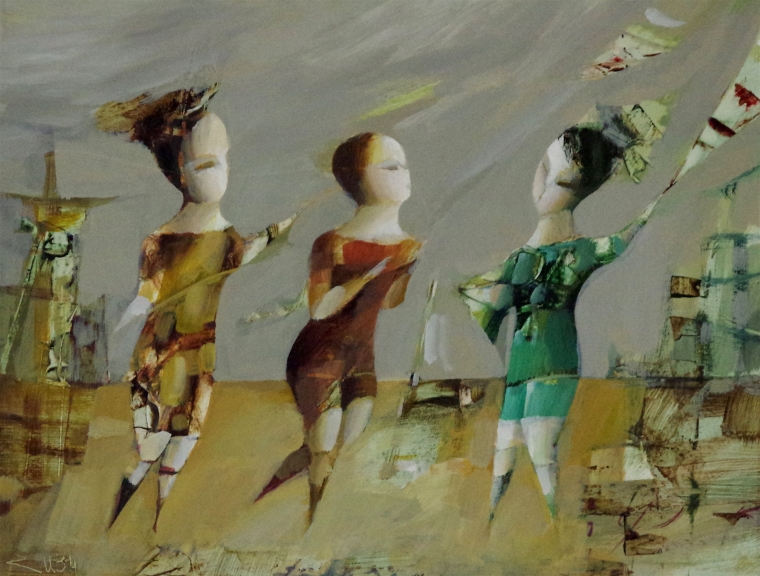Discovering the Depths of Emotion with Figurative Oil Painting Strategies
Wiki Article
The Advancement of Figurative Oil Paint: Comprehending Its Historical Relevance and Modern Interpretations
The advancement of metaphorical oil painting offers as a compelling lens via which to check out the interplay in between artistic expression and historical context. Contemporary artists, drawing from this rich heritage, are currently reinterpreting the human figure in ways that challenge traditional stories.Beginnings of Figurative Oil Paint
The beginnings of metaphorical oil paint can be traced back to the very early Renaissance in Europe, particularly in the 15th century. This duration marked a substantial separation from the inflexible kinds and level depictions characteristic of medieval art. Artists started to explore naturalism, highlighting the human figure and its emotional expression. The advancement of oil paint permitted greater deepness of color and detail, boosting the realism and vibrancy of their job.
In this transformative era, numbers were frequently illustrated within contextually abundant environments, showcasing not only their physical qualities but likewise their mental states. Pioneers such as Jan van Eyck and Titian harnessed the medium's versatility, using layering methods to attain luminance and texture. This development helped with the representation of detailed materials and the subtleties of complexion, adding to the growth of portrait and narrative scenes.
Moreover, the Renaissance emphasis on humanism fostered an admiration for distinctiveness, which consequently affected artists to create even more vibrant and relatable numbers - figurative oil painting. Because of this, metaphorical oil painting arised as a powerful lorry for storytelling and emotional involvement, preparing for future imaginative activities and designs
Key Historic Motions
Substantial historical activities have formed the evolution of metaphorical oil painting, each contributing unique approaches and techniques that broadened the tool's possibilities. The Renaissance noted a turning point, stressing realism and the human type, with artists like Leonardo da Vinci and Michelangelo pressing the boundaries of anatomical accuracy and viewpoint. Following this, the Baroque age brought significant contrasts of light and shadow, exhibited by Caravaggio, that infused spiritual motifs with intense emotionality.The 19th century presented Romanticism and Realistic look, where artists such as Delacroix and Courbet tested classic ideals, concentrating on individual expression and day-to-day life. The introduction of Impressionism additionally revolutionized the medium by stressing the impacts of light and color, causing a departure from standard depiction.
In the early 20th century, motions like Expressionism and Cubism redefined metaphorical paint via abstraction and the exploration of emotional deepness. Each of these movements not only reflected the societal modifications of their times however additionally prepared for modern interpretations. The interplay between these historical motions has produced a rich tapestry of styles and approaches, affecting modern-day musicians in their quest of catching the human experience on canvas.
Methods and Materials Development

Throughout the Baroque duration, techniques such as chiaroscuro and sfumato emerged, improving the psychological vibration of metaphorical make-ups. Artists started to experiment with lusters and impasto, adjusting structure and luminosity. By the 19th century, technologies like using pre-mixed paints in tubes revolutionized availability, allowing musicians to repaint en plein air and catch the short lived effects of light.
The 20th century experienced the introduction of synthetic pigments and tools, which expanded the combination and modified the consistency of oil paints. In addition, the exploration of new application strategies, such as palette knives and brushes of differing tightness, further varied imaginative expression. Jointly, these advancements reflect the progressing relationship between materials, methods, and the imaginative vision integral in figurative oil painting.

Contemporary Interpretations
Contemporary analyses of metaphorical oil paint mirror a vibrant discussion in between practice and technology, where musicians test developed standards and check out varied styles. This development materializes in different methods, as modern artists blend classic techniques with modern concepts, typically attending to social, political, and personal stories.Several experts attract ideas from historic jobs, yet they infuse their pieces with modern viewpoints, making use of the human type as an automobile for discourse on sex, society, and identification. Artists progressively try out abstraction, distortion, and multimedias, which permits a broader interpretation of the number and its context.
Additionally, the use of vivid color combinations and unusual structures typically serves to interfere with conventional viewing experiences, prompting vital engagement from target click over here markets. This shift in emphasis prolongs past looks; it shows an expanding understanding of the complexities of human experience in an interconnected globe.
As figurative oil paint continues to progress, it remains a crucial medium for discovering the nuances of modern life, symbolizing both a regard for heritage and a commitment to progressive idea. The result is an abundant tapestry of expression that resonates with the intricacies of the modern human problem.
Effect On Modern Art
The effect of metaphorical oil painting on contemporary art is extensive, as it has continuously inspired a myriad of creative motions and practices throughout the 21st and 20th centuries. From Expressionism to Surrealism and past, the exploration of the human figure has actually have a peek at these guys remained a central theme, allowing musicians to share complex feelings and narratives. This focus on figurative representation has resulted in a re-examination of standard strategies, leading to innovative techniques that mix realistic look with abstraction.
Moreover, contemporary musicians have actually welcomed figurative oil painting as a way to resolve political and social concerns, making use of the medium to test assumptions of sex, identity, and culture. The resurgence of interest in figurative job in current years shows a hoping for connection in a progressively digital world, where human experience and feeling are extremely important.
In addition, the discussion between figurative oil paint and contemporary art is obvious in the works of musicians such as Kehinde Wiley and Jenny Saville, that draw on historical referrals while instilling their pieces with modern significance. Eventually, figurative oil paint continues to form and redefine modern-day creative expression, underscoring its long-lasting value in the art world.
Conclusion
The evolution of metaphorical oil painting emphasizes its historic significance and flexibility across various imaginative motions. From the naturalism of the Renaissance to the emotive expressions of the Baroque and the cutting-edge techniques of modernity, this medium has actually continuously transformed. Contemporary analyses reflect unique compositions and vivid colors, cultivating important engagement with social and political motifs. Ultimately, metaphorical oil painting stays an important tool for exploring the human experience, reverberating exceptionally in today's electronic landscape.The development of metaphorical oil painting serves as an engaging lens via which to analyze the interaction between creative expression and historic context.Substantial historical movements have formed the advancement of figurative oil paint, each contributing distinct ideologies and techniques that expanded the medium's opportunities.As historic activities shaped the trajectory of figurative oil painting, the methods and products employed by artists have likewise gone through substantial transformations. figurative oil painting.The impact of figurative oil painting on contemporary art is extensive, as it has continuously influenced a myriad of this article imaginative activities and techniques throughout the 21st and 20th centuries.The advancement of metaphorical oil paint emphasizes its historic relevance and versatility throughout different creative activities
Report this wiki page